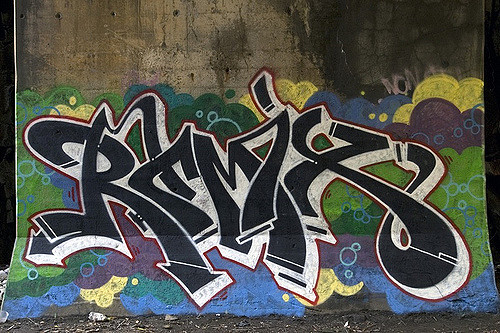Videos made of other videos. Songs made of other songs. Memes. Photoshop Collages. Unless you live under a rock, it’s hard to go a day without encountering media that could be described as a remix. But have you ever thought about remixing as an art form? A political act? A philosophy?
In this course we will explore remixing as a transformative compositional practice. Remixing is literally a kind of re-vision—a way of re-seeing and re-making the world around us. Though remixes are often associated with digital culture, the concept of remixing is part of a long artistic tradition that includes a range of pre-digital experimental art and literature (e.g. Pablo Picasso and James Joyce could be considered “old school” remix artists). Together we will examine the act of remixing through theoretical, historical, aesthetic, and political lenses to cultivate a deep understanding of the rhetorical and affective power of this genre. We’ll wrestle with questions like: How does remix culture complicate notions of authorship, originality, and creativity? What are the ethical and legal implications of creating things out of other people’s creations? Why does remix culture matter?
While your other writing courses may have warned you about the consequences of plagiarism, this course invites you to PLAYgiarize (a term coined by Raymond Federman). That is, you will be combining and manipulating pre-existing media in ways that allow you to express new ideas and arguments. You get to participate in remix culture all semester by producing different kinds of remixes with text, audio, images, material objects, and video. No previous experience with digital editing software is necessary. Beginners welcome!
What You’ll Learn How to Do
-identify, describe, and apply key theories, concepts, and techniques of remix culture
-make connections between remixing practices and more traditional writing practices (e.g. revision, thesis statements, developing arguments, transitions)
-design and produce original remix projects for different audiences using various technologies (e.g. digital audio and video editors)
-assess your own and your peers’ work in written reflections and discussions
-collaborate with peers to develop small and large-scale projects
-recognize the value of remix as a powerful form of argument and expression
Course Texts
–Remix Theory: The Aesthetics of Sampling by Eduardo Navas
-Additional readings and media will be provided as links or PDFs
Learning Activities
Participation: 20%
This course gives you the opportunity to exchange ideas, discuss readings and media, and assess your own and your peers’ projects as they progress. You will also do a lot of informal writing. For instance, periodically you will be asked to contribute entries to our “DIY Remix Handbook,” a collaborative google doc that will serve as a space to describe, explain, and share how you taught yourself to use particular technologies, apply remix techniques, etc. Participating actively in this course is crucial because doing so will allow you to develop and expand your capacities as a thinker and composer, and help to provide a lively, collaborative learning experience.
Culture Jamming Cut-Up: 10%
Using the remix technique of détournement, your task is to sample and remix a message from the mass media in order to subvert its meaning. This project must be created with paper or cardboard materials (print advertisements, cereal or toy boxes, greetings cards, pamphlets, etc.). In an artist statement, describe and explain the choices you made as a remix artist and how your decisions changed the meaning, message, and/or tone of the original media.
Song/Speech Mashup: 20%
This project invites you to demonstrate your knowledge of remix theory and sampling. In 3 minutes or less, create an audio mashup that includes a well-known speech and a song of your choice. Experiment with different combinations of music and various soundbites from the speech until you find a combination that is interesting and provocative. Reflect in an artist statement about why you chose to manipulate the music and speech in this way, as well as how your mashup alters/intensifies the meaning or tone of the original media you used.
1 Minute Video Remix: 20%
Respond to and/or critique a popular TV show by composing a 1 minute remix out of footage from that show. You might focus your remix on a particular theme of the show, or point out a problematic pattern or idea. There is one creative constraint: all visuals must come from the show (you cannot use any outside videos to enhance your remix). However, you may add any music or sound you wish. In your artist statement, you will explain your compositional choices and their effects, and discuss any readings or examples that you used as inspiration.
“UVA Remixed” Project: 30%
Working in teams of 4, create a textual, audio, and video remix based on an issue that matters to UVA students. While all three parts of the project must be about the same issue, they should not all make the same argument; rather, each kind of remix should focus on different angles of the issue. In addition to writing a collaborative artists’ statement, teams will present their work at an end-of-semester “Remix Showcase.” This public event will be attended by a panel of judges that will evaluate each team’s work and performance. Stay tuned for details!
